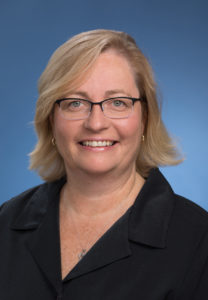
The COVID-19 pandemic, which initially affected the long-term care community disproportionately, led to significant changes within skilled nursing centers. As we continue to emerge from COVID and the overall number of cases continues to decrease, we have an opportunity to reflect on how our experiences may influence the future.
Although the workforce within post-acute and long-term care has been hit hard, and some providers made a significant transition to the utilization of telemedicine, increased medical director- and physician-engagement on-site has proven to be very effective. Direct collaboration with on-site physicians has enhanced the consistency of resident care.
Further, the rapid evolution of clinical guidelines and the widespread nature of COVID required additional team members to develop new workflows (policies and procedures), including a focus on infection control and treatment to provide guidance to staff, residents and residents’ families. The presence of on-site physicians and medical directors streamlined the establishment of these clinical standards and consequently led to better quality care.
The addition of on-site physicians and other medical professionals to regular care teams is also important based on the recent, ongoing trend of skilled nursing centers essentially acting as extensions of hospitals.
One of our campuses is currently working on an initiative with post-transplant patients and incorporating the transplant team on-site within skilled nursing centers. The goals are to ensure improved continuity of care, decrease in-hospital lengths of stay so transplant recipients can begin their rehabilitation sooner during their recovery, potentially decrease hospital readmission through the facilitation of in-person evaluations by the transplant team at the skilled nursing center, and improve education of skilled nursing center staff regarding transplant-related complications that may require ER evaluation. Programs such as this may help bridge the divide between typical care and resources available in PALTC and those in the acute care setting.

Further, at SALMON Health and Retirement, we benefited from the implementation of Zoom calls with leadership across all our individual campuses (initially daily, now weekly). This allowed for sharing best practices, centralizing the development of new workflows based on new regulations or information that could be tailored to the individual campuses, and answering questions in real-time, while also fostering a sense of community.
Additional collaborative efforts have also been developed, including weekly calls with the Massachusetts Department of Public Health to share new guidance and respond directly to questions from skilled nursing centers around the state and Project ECHO through the National Nursing Home COVID-19 Action Network. As Chief Medical Officer and Director of Clinical Services within our company, we seek to continue this collaborative work with the medical directors at each of our campuses to share best practices and develop quality improvement projects, while also attempting to address challenges that may arise in the future. Some of these initiatives have already begun — for example, deprescribing resident medications.
COVID has taught us the importance of frequent collaboration with on-site medical staff and of increasing our virtual communication in real-time. We see the changes that have been implemented based on these lessons as caregiving enhancements that will continue as standard practice for skilled nursing centers as we move forward.
By Randall J. Morse MD, FACP, CMD is chief medical officer of SALMON Health and Retirement. Deborah Freedman, RN, BSN, MS is director of clinical services at SALMON Health and Retirement. Founded as a skilled nursing center in 1952, SALMON Health is a third-generation, family-run organization offering service across the care continuum in New England.



